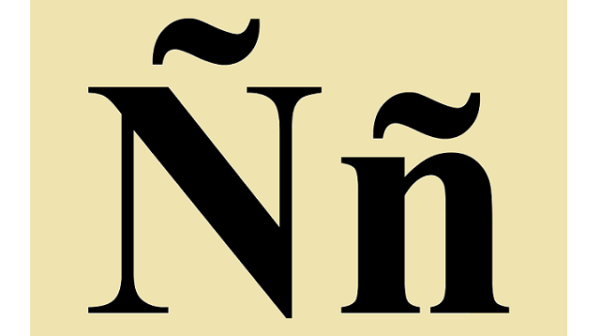
Important Facts about the Spanish Letter “Ñ” You Should Know
Google Doodles Celebrates the Spanish Letter “Ñ” on UN Spanish Language Day, April 23, 2021. The Artwork, Created by Guest Artist Min from Barcelona, Honors this Distinctive Consonant.
The letter “Ñ” holds great significance in the Spanish language and is recognized as one of its defining written features. Its unique punctuation serves as a clear indication that a text is written in Spanish.
The letter “ñ” plays a crucial role in distinguishing words in Spanish that would otherwise be similar in spelling. Some well-known examples include: caña/cana, pena/peña, cuna/cuña, campaña/campana.
The presence of the letter ñ is a strong symbol of Spanish identity. Even the name of the country, España, contains this letter, highlighting its importance. While Spanish generally does not have major spelling issues, apart from accents and a few letters pronounced differently from how they are written, the letter ñ is exclusive to the language and cannot be found in others.
In recent years, the unique character of the letter Ñ has contributed to its significance as a symbol of Hispanic identity. Terms like “generación Ñ” are used to refer to the children of Spanish-speaking parents in the United States, and an adapted Ñ serves as the logo of the Cervantes Institute, among other notable examples.
What is the Name of the Accent Symbol Over the Letter “Ñ” in Spanish?
The decorative accent that rests atop the “ñ” is called a virgulilla. However, many Spanish speakers are unaware of this specific term, so they commonly refer to it as the hat over the “ñ,” the accent mark, or even the eyebrow.
Nevertheless, those involved in computer programming are typically familiar with its actual name, as it has posed a significant challenge for some of them. The letter “ñ” and its virgulilla necessitated an increase in the number of bits used to represent it on computer screens, although achieving this is still often a technical challenge.
The Origin of the Letter “Ñ”
As you might have guessed, the letter “ñ” originated from the letter “n.” It was not part of the Latin alphabet and emerged as a result of linguistic developments nearly nine centuries ago.
The letter “ñ” holds a unique position in the Spanish alphabet as the only letter that originated in Spain. It not only serves as a symbol but also represents Hispanic heritage and identity.
In 1803, the Royal Spanish Academy officially included the letter “ñ” in its dictionary, recognizing its cultural significance. In 1993, Spain passed legislation to ensure the incorporation of the letter in computer keyboards, acknowledging its irreplaceable role in the Spanish language.
In 2010, the United Nations designated April 23 as a day to celebrate the Spanish language, which is widely spoken around the world.
As you may already know, Spanish, along with Italian, French, Portuguese, and Romanian, has its roots in Latin. However, the sound represented by “ñ” has no equivalent letter in Latin. To address this, in the 12th century, Spaniards began placing an accent on top of the letter “n” as a graphical representation of this distinct sound, simplifying the need for double letters.
During this period, Spanish scribes utilized the tilde (wavy line) placed above letters to indicate doubled letters. For example, “nn” became “ñ” and “aa” became “ã.”
The letter “ñ” emerged to represent a new sound that did not exist in Latin but appeared in various Romance languages with different consonant groups, such as double “n” (anno-“año”), “gn” (lignu-“leño”), or “ni” followed by a vowel (Hispania-“España”).
In the pursuit of linguistic economy, medieval scribes, who painstakingly copied books before the invention of the printing press, decided to simplify. They chose the group of consonants “nn,” which was eventually condensed into a single letter, distinguished by the placement of the virgulilla (the upper-line).
In the 13th century, King Alfonso X the Wise established the first guidelines for the Castilian language and solidified the usage of “ñ” to represent the phoneme /ɲ/. It was then widely adopted and included in the first Spanish grammar, written by Antonio de Nebrija and published in 1492.
Different groups of consonants in Latin, such as “gn,” “nn,” or “ni,” underwent distinct evolutions in the Romance languages, each with its own unique graphical representation for the sound. Italian and French chose “gn,” Catalan opted for “ny,” and Portuguese used “nh.”
For medieval Spanish, the chosen graphical representation for the sound was “nn,” which was commonly abbreviated to a single “n” with a wavy line on top. This is how the new letter “ñ” came into existence, although similar cases occurred with other letters as well. However, the letter “ñ” is perhaps the most famous one.
The letter “Ñ” has come to symbolize the identity of the Spanish language. Latin publisher Bill Teck coined the term “Generation Ñ” to recognize Hispanic culture and its influence on the United States. Associations like the Instituto Cervantes and the National Association of Hispanic Journalists have embraced the letter as a symbol of Hispanic heritage.
The Modern Usage and Importance of the Letter “Ñ”
The letter “ñ” has a fascinating history and serves a unique purpose in various languages, primarily in Spanish. Its origins can be traced back to the Latin word “annus,” meaning “year,” which had a double “n.” Over time, the tilde (the diacritical mark) was used exclusively with the letter “ñ” during the fourteenth century.
As the Spanish language evolved phonetically, the letter “ñ” began to represent its distinct sound, not just limited to words with “nn.” Spanish words such as “señal” and “campaña,” which have English cognates like “signal” and “campaign” respectively, utilize the letter “ñ” instead of the English “gn.”
The influence of Spanish also extended to other languages. The Basque language, unrelated to Spanish, adopted the use of “ñ” to represent a similar sound. Similarly, Galician, a language similar to Portuguese, also uses “ñ” (while Portuguese uses “nh” for a similar sound).
In the Philippines, which was under Spanish colonial rule for three centuries, Spanish words were integrated into the national language, Tagalog. As a result, “ñ” was added to the traditional 20 letters of the Tagalog alphabet.
While “ñ” is not part of the English alphabet, careful writers frequently use it in adopted words such as “jalapeño,” “piña colada,” and “piñata,” as well as in personal and place names. It is also utilized in the transliteration of several lesser-known languages into the Roman alphabet.
In Portuguese, the tilde is used over vowels to indicate nasalization, but it has no direct connection to the use of the tilde in Spanish.
The letter “ñ” is unique because it is exclusively used in Spanish and does not have a counterpart in the classical Latin alphabet. It emerged to represent a new sound that did not exist in Latin but became essential as Romance languages developed from Latin.
Pronouncing the Ñ
When learning Spanish, beginners are often taught that the letter “ñ” is pronounced like the “ny” sound in “canyon,” derived from the Spanish word “cañon.” While using the “ny” pronunciation is generally acceptable and understood, it is important to note that it is only an approximation. If “canión” were a word, its pronunciation would differ slightly from “cañon.”
To pronounce the ñ accurately, the tongue engages with the alveolar ridge, which is the ridge located just behind the top front teeth. Additionally, a part of the tongue briefly touches the front of the palate. As a result, pronouncing the ñ takes a little more time and effort compared to the blending of two sounds in “ny.” The ñ sound is better described as a single sound rather than a combination of two distinct sounds.
How many languages contain the letter “ñ”?
The letter “ñ” is present in several languages. It is primarily associated with the Spanish language, where it holds significant importance. However, it is worth noting that other languages also include the letter “ñ” to represent specific sounds.
Apart from Spanish, the letter “ñ” is utilized in the Filipino language (Tagalog) as a result of Spanish colonial influence. Additionally, the Basque language (Euskara) and Galician, a language similar to Portuguese, also incorporate the “ñ” to represent a similar sound. These languages have adopted the use of the letter “ñ” from Spanish due to historical and linguistic connections.
While the letter “ñ” is not a standard component of the English alphabet, it is occasionally employed by careful writers when using loanwords or borrowed terms from Spanish, such as “jalapeño,” “piña colada,” or “piñata.” Furthermore, in transcribing certain lesser-known languages into the Roman alphabet, the “ñ” may be used.
In summary, while Spanish is the primary language associated with the letter “ñ,” it can be found in a few other languages that have been influenced by Spanish or share similar phonetic elements.



